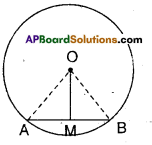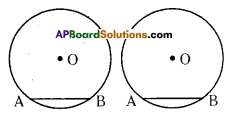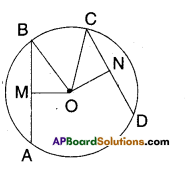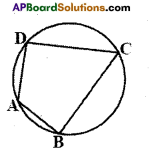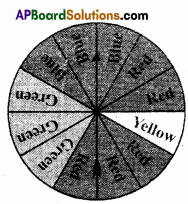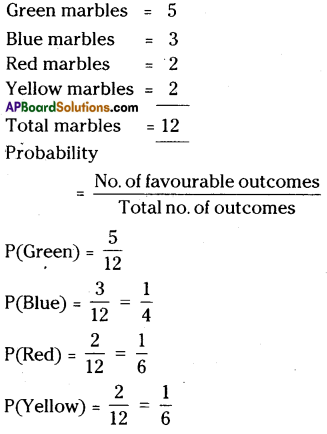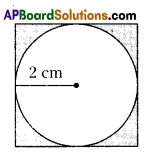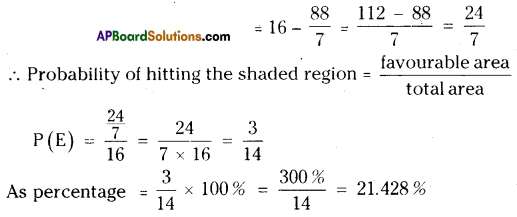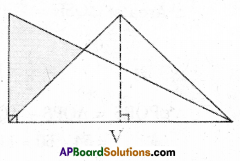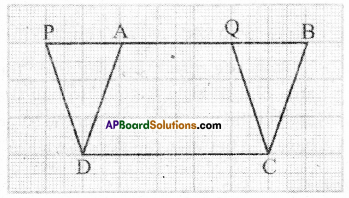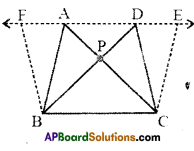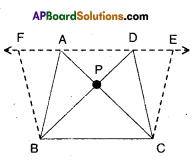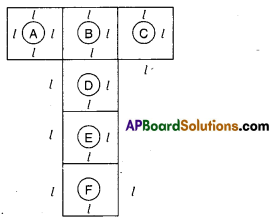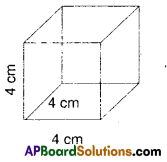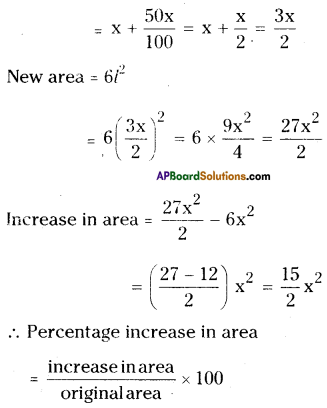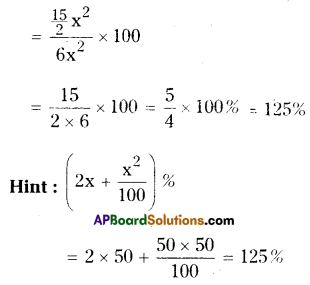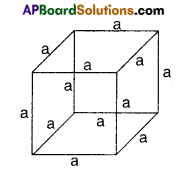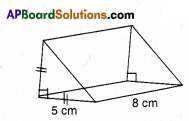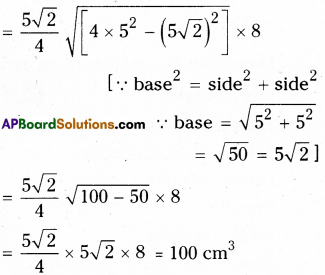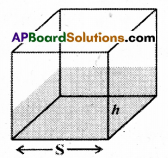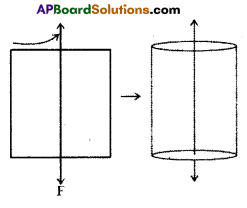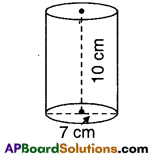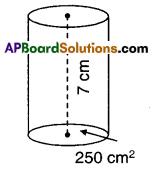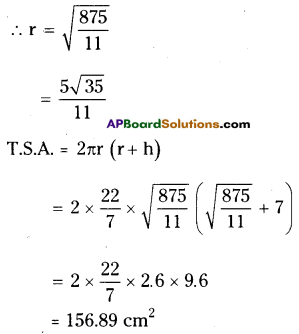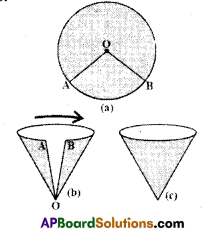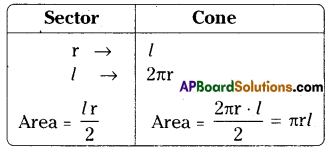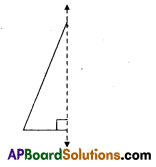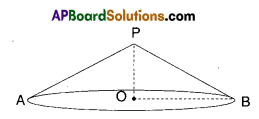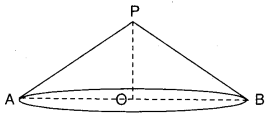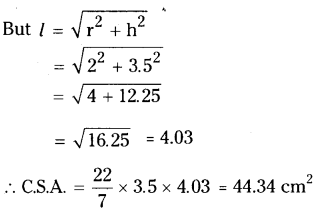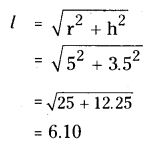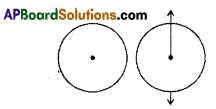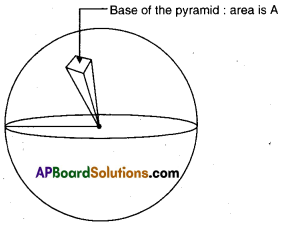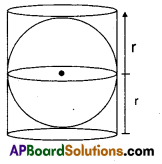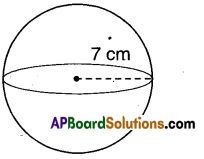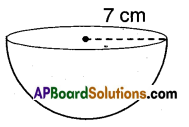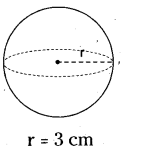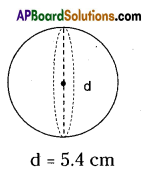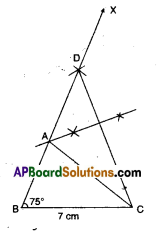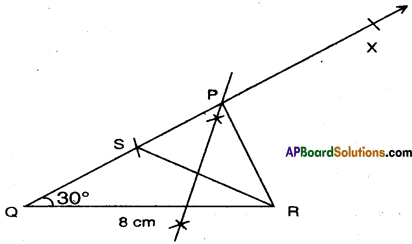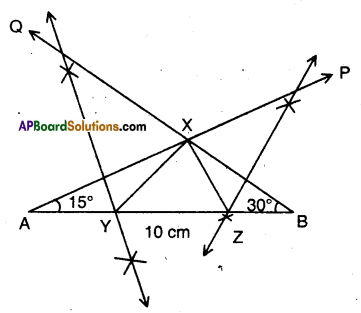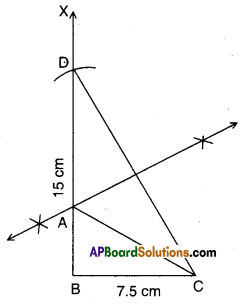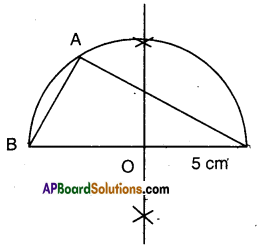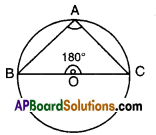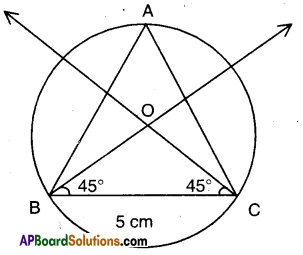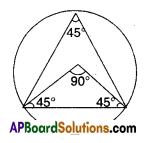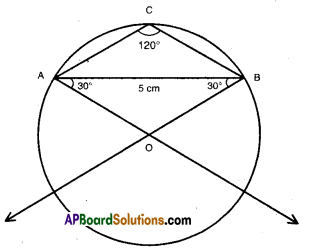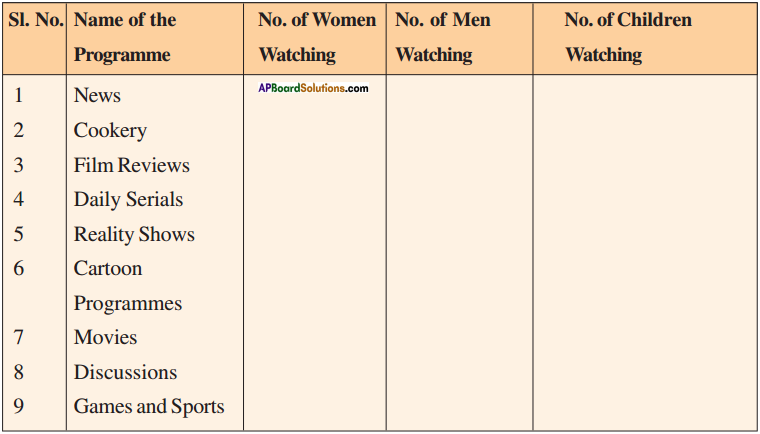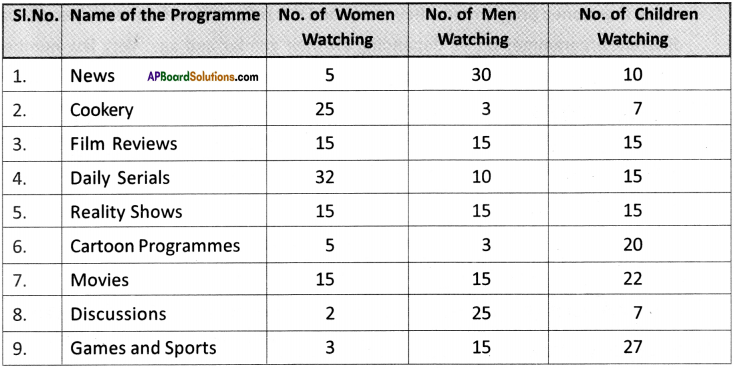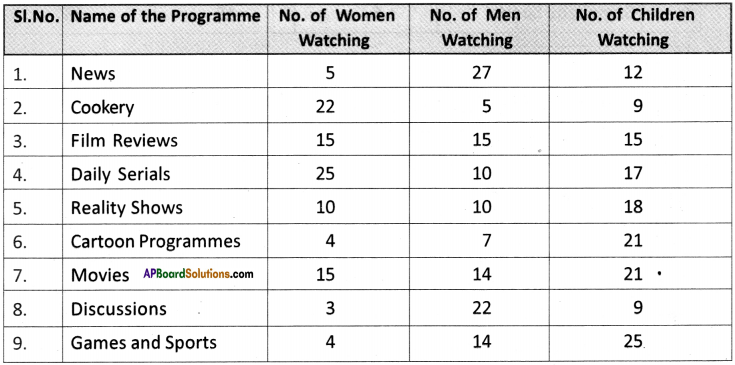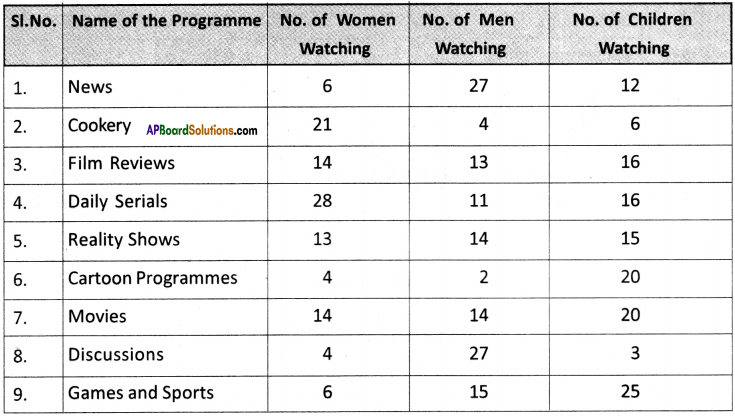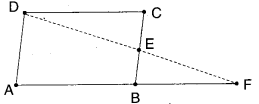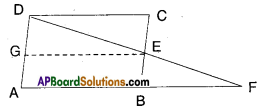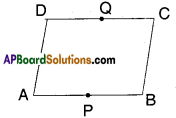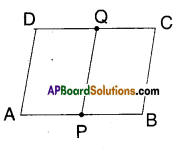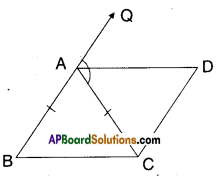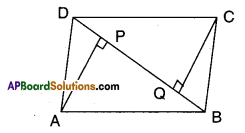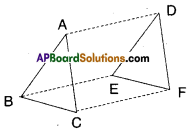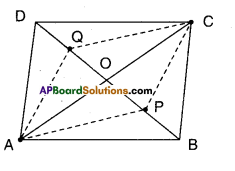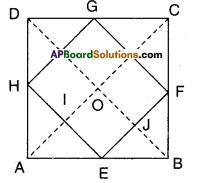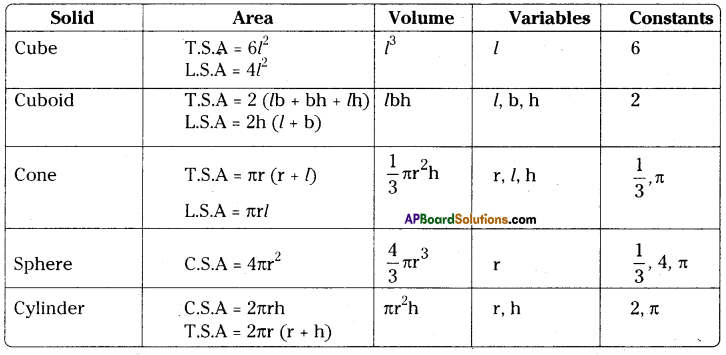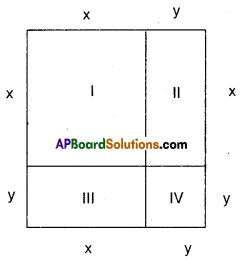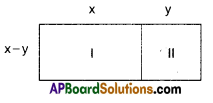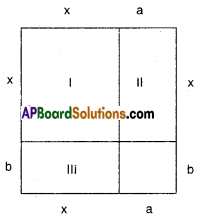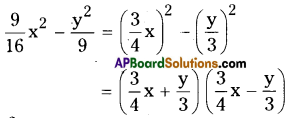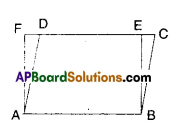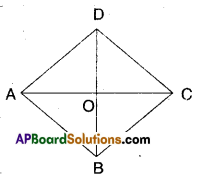AP State Syllabus AP Board 9th Class English Textbook Solutions Chapter 1A The Snake And The Mirror Textbook Questions and Answers.
AP State Syllabus 9th Class English Solutions Chapter 1A The Snake And The Mirror
9th Class English Chapter 1A The Snake And The Mirror Textbook Questions and Answers
Look at the picture and answer the questions that follow.
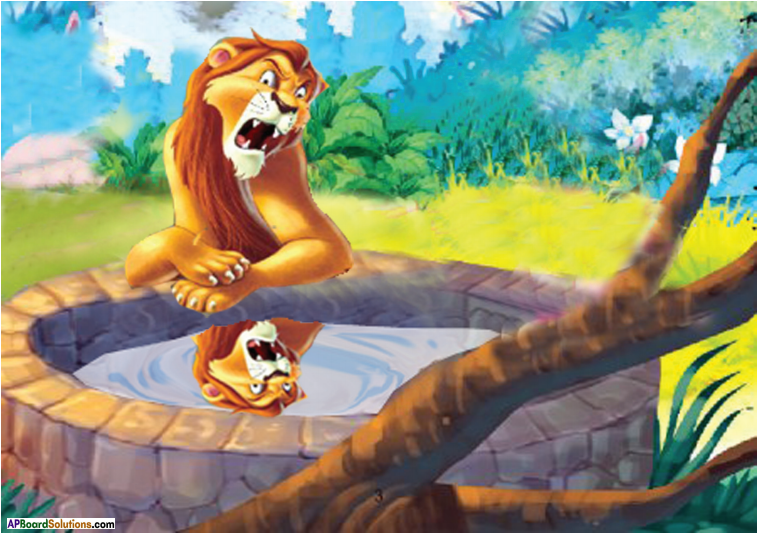
Question 1.
What did the lion do on looking at its own reflection?
(a)enjoyed its beauty
(b) felt threatened
(c) felt angry
Give reasons for your option.
Answer:
(c) felt angry
The lion was the king of the forest. It became angry when it saw another lion in his kingdom.

Question 2.
Have you ever heard or read a story of a pet or an animal looking into a mirror? If yes, how did the animal feel?
Answer:
Yes, I have heard of my friend’s dog looking at its reflection in a mirror. The dog barks at its own image till someone takes him away.
Comprehension
I. Answer the following questions.
Question 1.
The doctor heard a sound coming from above three times. What was it?
Answer:
The doctor heard a noise from above three times. It was made by the snake moving under the roof. But the doctor thought it was the movement of rats.
Question 2.
Why did the doctor sit like a stone?
Answer:
A full blooded cobra was coiling itself around the doctor’s left hand. The snake’s wide open hood was just four inches away from his face. Terrible fear made the doctor sit like a stone. His active mind told him any movement would make the snake bite him. So he remained like a statue.

Question 3.
What made the doctor forget his fears and have a sense of relief?
Answer:
The snake looked at its image in the mirror. It seemed it was interested in its beauty. It slipped down from the doctor’s hand on to the table. It moved closer to the mirror, the doctor felt relieved. He quietly rose from his chair. He ran out of the room.
Question 4.
Did the snake admire its beauty? Yes or no? Pick the lines from the passage in support of your answer.
Answer:
The snake appeared to admire its beauty. It was certainly looking at its image in the mirror. It wanted to enjoy its reflection at closer quarters.
Question 5.
Why did the doctor want to marry a woman doctor? What kind of woman doctor would he like to marry?
Answer:
The doctor says he was poor. So he wanted to marry a woman doctor with good practice and who had plenty of money. He also wanted her to be fat. That would help him – when he made some silly mistake – run away from her easily. That way he wanted to save himself from her possible attacks.
Question 6.
What did the doctor think about the snake when it looked into the mirror?
Answer:
The doctor thought that the snake was admiring its beauty. He also thought that it was going to take an important decision about its beauty. It was probably thinking of growing moustache or applying eye shadow and mascara.

Question 7.
Why did the doctor run to his friend’s house? Did the snake want to harm the doctor? Why or why not?
Answer:
The doctor ran to his friend’s house as he was afraid of the snake. But the snake had no interest in harming the doctor. Even when it was on the doctor’s hand, it did not harm him. Normally snakes harm persons when they feel threatened by those persons.
II. Here is a list of sentences from the story. Tick (✓) the sentences that tell you that the author was afraid of the snake.
| Sentence | Boxes for Ticking |
| 1. I didn’t tremble. 1 didn’t cry out. | |
| 2. I sat there holding my breath. | |
| 3. I forgot my danger and smiled feebly at myself. | |
| 4. Holding my breath 1 got up from the chair. | |
| 5. I leapt into the yard and ran for all I was worth. | |
| 6. I don’t claim that it was the first snake that had ever looked into a mirror. | |
Answer:
| Sentence | Boxes for Ticking |
| 1. I didn’t tremble. 1 didn’t cry out. | |
| 2. I sat there holding my breath. | ✓ |
| 3. I forgot my danger and smiled feebly at myself. | |
| 4. Holding my breath 1 got up from the chair. | ✓ |
| 5. I leapt into the yard and ran for all I was worth. | ✓ |
| 6. I don’t claim that it was the first snake that had ever looked into a mirror. | |
Vocabulary
I. Tick (✓) the correct meaning of the words underlined below.
1. The house was not electrified.
a) There was no electricity in the house.
b) The house was not away from the electricity board.
c) The house was not lit up.
Answer:
a) There was no electricity in the house.
2. The earnings were meagre.
a) very high
b) very small
c) nil
Answer:
b) very small

3. I also possessed one solitary black coat,
a) single
b) unique
c) expensive
Answer:
a) single
4. I made another earth-shaking decision,
a) valuable
b) dangerous
c) important
Answer:
c) important
5. The room was surrounded by darkness,
a) full of
b) covered
c) encircled
Answer:
a) full of

6. Some thief had removed most of my things.
a) damaged
b) destroyed
c) stolen
Answer:
c) stolen
II. Read the following sentence from the text and notice the underlined word. Suddenly there came a dull thud as if a rubber tube had fallen to the ground.
Thud’ means to fall with a low dull sound.
Here is a list of words related to sounds. Say what these words mean. Refer to a dictionary.
| Word | Meaning |
| bang | |
| clang | |
| buzz | |
| ring | |
bang (n) : a sudden loud noise
clang (v) : make a loud ringing sound like that of metals being hit
buzz(n) : a continuous sound like the one a bee makes make
ring (v) : a sound like the telephone or a bell makes
III. Usethelinkersgivenintheboxtocompletethestory.Alinkermaybeusedmorethanonce.
A young doctor lived in a village. The doctor told his friends an interesting story about himself and a cobra. It was a hot summer night. ___(1)___ he opened the door, he heard a sound ___(2)___ was well known to him. He and rats shared the same room. There was no electricity in the house, ___(3)___ he took out a box of matches and lit a kerosene lamp. He took off his clothes and lay down ___(4)___ he could not sleep. He got up from the bed and started reading a story-book. Near the table there was a mirror, ___(5)___ tempted him to look at himself. He was unmarried ___(6)___ he was particular about his handsomeness. He wanted to marry a woman doctor ___(7)___ had plenty of money and should be fat. ___(8)___ he was having such thoughts, suddenly he felt ___(9)___ a rubber tube had fallen to the ground ___(10)___ a snake landed on his shoulder. At that time the only thing he could do was to pray to God. The snake would bite him at any moment ___(11)___ suddenly it turned its head and started admiring its beauty in the mirror. The doctor was thus saved.

Answer:
- When
- which
- so
- but
- which
- so
- who
- While
- as if
- but
- but
Grammar
I. The Past Perfect and the Simple Past
Read the following sentences from the story.
We found we had little to carry. Some thief had removed most of my things.
In the above two sentences, the first one is in the simple past (found, had) and the second is in the past perfect tense (had removed).
As you can see, the action which occurred earlier, is expressed in the past perfect tense, whereas the action which occurred later, is expressed in the simple past tense. Here are a few more examples.
1. Sujatha had arrived at the station before the train came.
2. The doctor arrived after the patient had died.
3. I bought the ticket as soon as I boarded the bus.

When two actions occur nearly simultaneously in the past, both are expressed in the simple past tense.
Now combine the following pairs of sentences using the past perfect and the simple past.
(use after, before or when as linkers,)
The first one has been done for you.
1. I brushed my teeth. I took my breakfast.
Answer:
After I had brushed my teeth, I took my breakfast.
Or
I had brushed my teeth before I took my breakfast.
2. She started to go to market. It rained heavily.
Answer:
After she had started to go to market, it rained heavily.
Or
She had started to go to market before it rained heavily.
3. He completed his homework. He went to bed.
Answer:
After he had completed his homework, he went to bed.
4. I finished my dinner. Then my father came.
Answer:
When I had finished my dinner, my father came.
5. I fell seriously ill. I met my family doctor.
Answer:
When I had fallen seriously ill, I met my family doctor.
6. I locked the door. I went out to meet my friend at a restaurant.
Answer:
After I had locked the door, I went out to meet my friend at a restaurant.
II . Phrasal Verbs
Look at the following phrasal verbs and their meanings.
1. take out – to remove something from inside
2. set up – to arrange for something to happen / to start
3. take off – to remove
4. lie down – to take rest
5. take time off – to take some time for something
6. look into – to observe keenly
7. look at – to have a look at something
8. get up – to wake up
9. change into – to turn into
10. leave behind – to leave something as a token of memoray or gift
As you can see, a phrasal verb is a unit of a verb and one or more particles/a preposition. It cannot be understood on the basis of the meanings of the individual parts in isolation, but rather it must be taken as a whole.

Use the above phrasal verbs in the blanks. Make necessary changes in the verb forms.
Venkata Rao was a rich man. He wanted to ___(1)___ some business in the town. So he ___(2)___ a lot of money from the bank. On an auspicious day he started his medical business, which prospered by leaps and bounds. He became so busy that he could not ___(3)___ for any rest. He used to ___(4)___ very early in the morning and go to his office. In the afternoon he would ___(5)___ his shirt and ___(6)___ on his couch in the office. After a nap he would put on his shirt. Then he would ___(7)___ the mirror and ___(8)___ himself admiringly. Anyhow he ___(9)___ some fame in the town even when he went abroad. ___(10)___ a new man. Everybody believed that he
Answer:
- set up
- took out
- take time off
- get up
- take off
- lie down
- look into
- look at
- left behind
- had changed into
Writing
I. Write a descriptive essay on any unusual or humorous incident you may have witnessed or experienced.
Answer:
Have you ever heard of or seen a dog walking on water ? Most of or rather all of you would say a firm ‘No’. Nay, you may even doubt if there could be a more foolish question on this earth than the one above. You have every right to doubt and you are right in doubting too I But the world is so full of surprising and unusual incidents and creatures that we can’t believe their existence unless we see them !
I am lucky and also proud to be a witness to one of such unbelievable and exciting incidents. I have a friend whose uncle from the USA gifted him on his last birthday a very strange looking young dog. My friend Rohit named his prized possession ‘Walkie’. Rohit loves to spend every second of his free time with Walkie. Even Walkie likes to spend more with Rohit than with any other member of the family. Walkie accompanies Rohit to every place except, of course, school.
On one hot summer day we all thought of going to the river bank to cool ourselves by swimming in the river. As usual, Walkie joined us along with Rohit. And as Rohit walked into the water in his swim clothes, Walkie too stepped into the river. And then came the stunning discovery that made us dumbstruck ! Walkie was walking on the surface of the water as if it was land ! For a few moments, none of us could believe our eyes ! To be doubly sure of truth of what we saw, we made Walkie go this way, that way in – no, on – the river. And as if unaware of its unusual ability, Walkie jumped„hopped, leapt and ran all around the river – on the surface – to our commands.
That evening everyone of our friends was telling Walkie’s story to every person we came across. And everyone of us got the same response – “Don’t be a fool and don’t try to make us a fool !
The news spread like a wildfire ! The following day the whole village was on the bank of the river. And Walkie was the focus of everyone’s attention. And to thrill every spectator, Walkie crossed the river – walking on the surface – twice or thrice ! Walkie became the hero of our village and Rohit enjoyed his pet’s popularity to his heart’s content.
And it has become our hobby now to frequent to the riverside along with Walkie !

II. Preparation of a Poster :
Teli the names of some important events/happenings.
If you want to publicize the matter, what would you do?
Look at the poster given below.
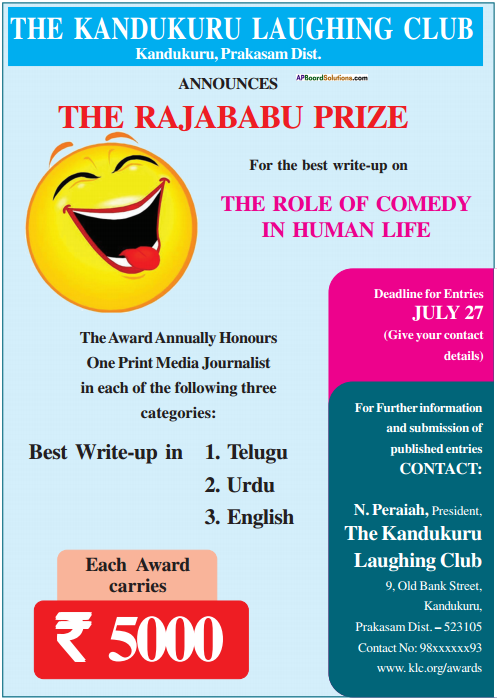
Now reflect on the following questions.
1. What are the elements of an effective poster?
Answer:
All the elements like colour, size, layout, font size, language are important.
2. Who issued the poster?
Answer:
(Here) THE KANDUKURU LAUGHING CLUB, issued the poster.
3. What is the purpose of the poster?
Answer:
The purpose of the poster is to invite entries for Raja Babu award.
4. What is the deadline?
Answer:
July 27 is the dead line.
5. What are the other details highlighted?
Answer:
The other details highlighted are
1) Award value
2) Who can participate
3) Contact address, etc.
6. What should be highlighted in a poster?
Answer:
All the necessary details are to be highlighted.
7. Who are the target audience of the poster?
Answer:
(Here) The print media journalists in Telugu, Urdu and English are the target audience.

Now prepare a poster using the information given below by arranging it in a proper sequence.
| Highlights | Information |
| Theme | Humour |
| Occasion | The Laughter Day |
| Category | Stories, Songs, Poems, Essays, Articles and Cartoons |
| Award | Best Comic Writer Award |
| Prize Amount | ₹ 10,000 |
| Contact No. | 98xxxxxx49 |
| Deadline | 9th August |
| Issued by | ABC Laughing Club, Mummidivaram, East Godavari Dist. -533216 |
| Target Audience | Writers, Journalists, Poets, Essayists,Cartoonists and Lyricists |
Answer:
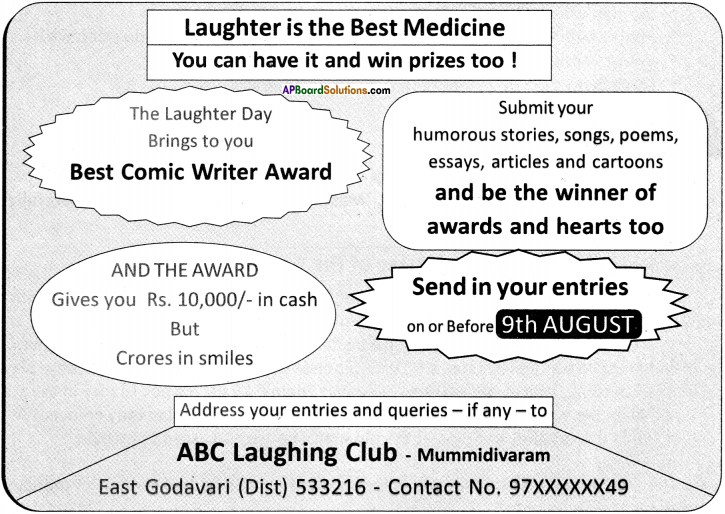
Study Skills
Here is a short narration. Read it carefully and make a list of important points. Suggest a suitable title for it.
The young doctor married a rich fat foreign woman. He told her ‘the episode of the snake and the mirror’. She laughed heartily. He went on talking about cobras and some funny facts (associated) related to them. He said to her “Cobras are the most poisonous, active and dangerous snakes. But, surprisingly, most Hindus worship them. It is funny to know that some women drop eggs and pour milk into the ant hills where cobras usually reside.
It is funny to know that some people believe cobras dance to the tunes of charmers. In fact, they have no ears. It is equally humorous to be aware of the fact that most cobra victims go to the charmers instead of the doctors. The charmers enchant some so-called mantras taking some neem leaves into their hands. The cobra victim dies and they say the victim came late to them. It is funnier to know that some farmers cremate cobras and perform funeral rites as if one of the members of their family has died.” “Are there any other funny stories related to cobras?” The young wife enquired. “Yes”. There are so many stories to tell but! will tell them tomorrow. The patients may be waiting for me at hospital.” The doctor said and left for hospital in a hurry.
Answer:
Cobras : Some Beliefs Among Hindus
- An Indian doctor tells his foreign wife about cobras and some beliefs about them.
- Cobras are the most poisonous, active, and dangerous snakes.
- Yet, most Hindu women worship cobras.
- Women offer eggs and milk to cobras.
- People believe cobras dance to the tunes of charmers. Cobras do not have ears.
- Cobra victims go to charmers, instead of to doctors.
- Some farmers cremate cobras and perform funerals.
Listening
Practise listening carefully. Then you will be able to speak.
Your teacher will tell you the story, ‘Master of the Game.’ Listen to it carefully and answer the following questions.
Master of the Game
An old man who lived in a small side street in the city of Mumbai had to put up with the nuisance of having boys play cricket outside his house, at night.
One evening when the boys were particularly noisy, he went out to talk to them. He explained that he was a pensioner, who was happiest when he could see or hear boys playing his favourite game, cricket. He said he would give them ? 25 each week to play in the street at night. The boys were thrilled. They were being paid to do something they enjoyed I At the end of the first week they knocked at the old man’s house and asked to be paid.
He did so.
The second week when they asked for payment he said he had run out of money and sent them away with only ₹15.
The third week the man said he had not yet received his pension and gave them only ₹10
The boys were very disappointed but there was not much they could do about it.
The fourth week the man said he could not afford to pay them ₹25 as he had promised, but would give them ₹ 5 each week without fail.
This was too much for the boys.
“You expect us to play seven days a week for a measly ₹5!” they yelied. “Go to blazes.” They stormed away and never played on the street again.

Now, answer the following questions.
1. What made the old man talk to the boys?
Answer:
The old man was living in a small side street in Mumbai. Some boys were playing cricke outside his house every night. They were very noisy. The old man Was unable to put up with that nuisance. So, he decided to talk to the boys.
2. Why did the boys stop playing cricket in the night outside the old man’s house?
Answer:
The old man promised to pay Rs. 25 a week to the boys for playing his favourite game near his house. After some time he paid Rs. 15 a week. Later he reduced it to Rs. 10. When he said he couldn’t pay more than Rs. 5 a week, the boys said it was too little for a week’s play. So they stopped playing cricket there.
The Snake And The Mirror Summary in English
Vaikom Muhammad Basheer is the writer of ‘The Snake and the Mirror”. He is a famous story teller from Kerala. The story is humorous. It tells us the experience of a young home doctor with a snake. The doctor was living alone in a small room with tiled roof. It was a hot summer night. He entered his room late at night. He tried to sleep but couldn’t. It was hot and he sat on a chair in front of a mirror and tried to read a book. There was a noise in the roof once or twice. But he did not bother about it because there were a lot many rats moving around. He started dreaming about marrying a fat, rich lady doctor.
Suddenly there was a ‘thud’ like sound. As he turned back to see what it was, there was a strong, long cobra coiling around his left hand with its hood wide open and just four inches away from his face. He at once became like a stone in fear. But his mind was active. As he was thinking of how to save himself, the snake saw its image in the mirror. It seemed that the snake was interested in its beauty. So it slipped down on to the table and moved towards the mirror. The doctor took this opportunity to run away from the room to a friend’s house. The following morning he came! back to his room with his friend. There was no snake. The room was almost empty. Some! thief had taken away all his belongings except a dirty vest. The doctor answers a listener’s question by saying he married a woman who was lean and an expert in running!
The Snake And The Mirror Glossary
coiled (v-past tense) : turned round and round
full-blooded (adj) : strong
homeopath (n) : a doctor practising home system
discuss (v) : talk about (Note : The word ‘discuss’ should not be followed by ‘about’. Its noun form ‘discussion’ can take ‘about’. The spelling of ‘discuss’ has two ‘s’ letters at the end.)
restaurant (n) : a place where food items are served (Make a note of the spelling !)
returned (v-past tense) : came back (Note : The word ‘back’ should NOT be used after ‘return’)
meagre (adj) : too small
solitary (adj) : single; only one
vest (n) : a sleeveless undershirt
gables (n-plural) : (here) long wooden bars supporting the roof
take time off (phrasal verb) : be free from work; take rest
parting (n) : the separating area
moustache (n) : hair grown on a man’s upper lip
earthshaking (adj) : very surprising; having great importance
resumed (v-past tense) : took back; occupied again
wriggled (v-past tense) : twisted and turned the body to move
Simultaneous (adj) : happening at the same time as another act
tremble (v) : shiver/shake in fear
slithered (v-past) : moved smoothly, glided
at closer quarters (phrasal verb) : from a short distance away
hood (n) : an expanded part of snake’s head
leaden (adj) : made of lead
lurked (v-past tense) : was around secretly
feebly (adv) : weakly
reflection (n) : image
mascara (n) : something applied on eye lashes to make them look dark and thick
vermilion (n) : bright red coloured powder applied on the forehead as a round spot
unwound (v-past tense) (wind-wound x unwound) : freed itself
crept (v-past tense of creep) : moved on all limbs
closer (adj-comparative degree) : nearer
no mere image cut in granite : no more afraid and so not like a statue
a man of flesh and blood : a normal man
leapt (v- past tense of leap) : jumped
heaved a sigh of relief : felt relieved
companion ife : wife
reedy (adj) : very thin like a reed
sprinter (n) : one who participates in running competitions
smeared (v-past tense) : applied; rubbed
taken with (phrasal verb) : attracted by
![]()
![]()
![]()
![]()
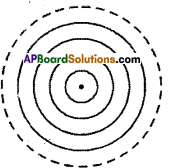
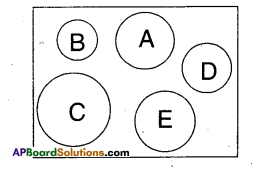
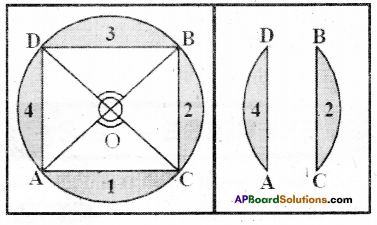

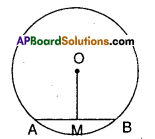 [Page No. 267]
[Page No. 267]